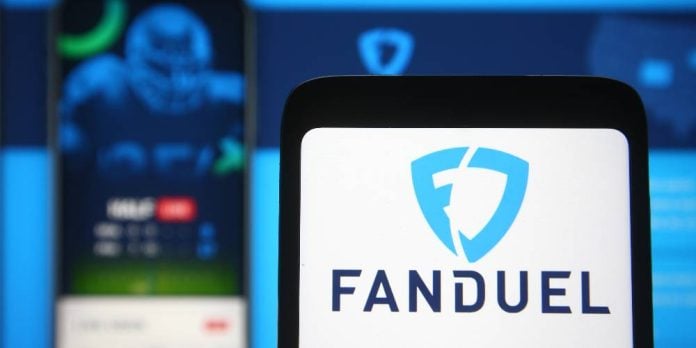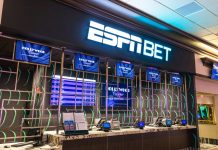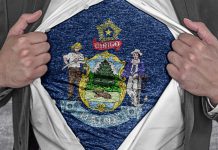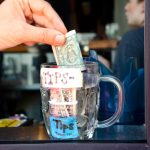At times, the tone of the FanDuel Investor Day presentation felt like a victory lap. Given FanDuel’s position as the market leader, there was certainly room to brag. Over the course of the two-hour presentation, the company and its presenters revealed a number of interesting figures. We’ve pulled the top five for you.
1: FanDuel Sportsbook is the top operator in 11 of 14 states it operates in
Using gross gaming revenue (GGR) as a barometer, the only states FanDuel operates in where it is not the top operator are Colorado, Iowa, and Wyoming.
In New Jersey and Pennsylvania, FanDuel lays claim to half the market, while in New York, the company has 46% of the market and $428 in GGR so far this year. Here is a look at the full breakdown from the presentation:
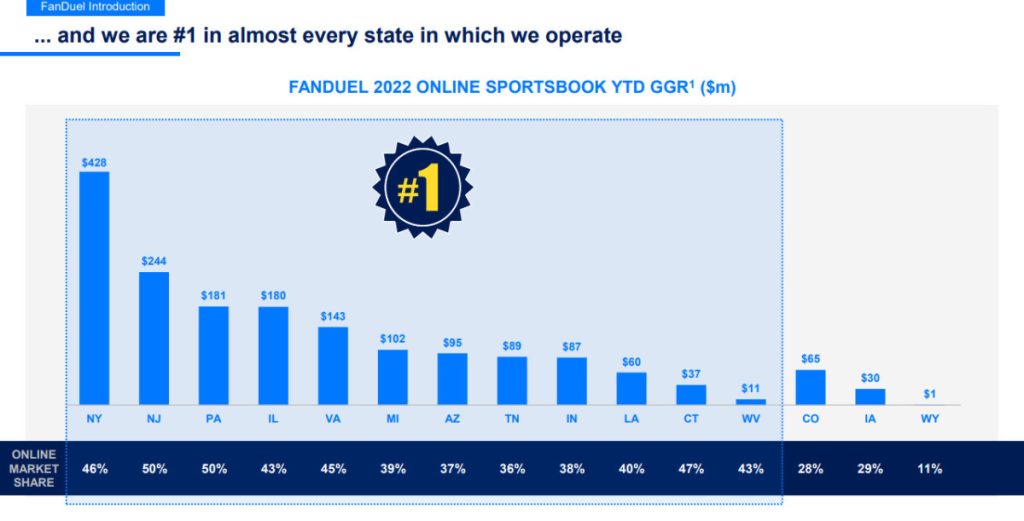
2: FanDuel predicts $40.5 billion in annual GGR by 2030
Currently, FanDuel is grossing around $9 billion annually, divided between $4.3 billion generated from iGaming and $4.6 billion from sports betting. Its models suggest that number will grow by 4.5X by 2030. This model does factor in the potential for future states in addition to existing market growth.
The 2030 projection suggests $40.5 billion in revenue divided into $17.8 billion from online casino and $22.6 billion from sportsbooks.
FanDuel President Christian Genetski addressed California during his part of the presentation. He acknowledged that the failure of Prop 27 was a disappointment, but also noted that, had it passed, the legalization of sports betting in California would have been “audaciously ahead of schedule.”
“The takeaway point I want to focus on with California, however, is that there’s one thing on which all the relevant stakeholders agree–the national online operators, the large tribal gaming casinos in California, the small non-gaming tribes, policymakers in California–and that is that, as sports betting continues to spread across the country in the majority of the United States population has access to mobile sports betting. California is not going to be an outlier. It is going to join those states,” he added.
3: Customers are top source of new account referrals
In addition to market share, another way FanDuel is outpacing the competition is through increasingly lower customer acquisition costs.
FanDuel CCO Mike Raffensperger noted that the best source of new customers for the company is not from affiliates or direct marketing, but rather referrals from existing customers.
“About one out of every four customers that joined the FanDuel platform came because their friend or family member told them, ‘Hey, this is really great, and I want you to try it.’ This has actually now our most efficient cost of customer acquisition where referral comes onto our platform approximately 60% more efficiently than other channels,” Raffensperger noted. “This opportunity grows as it scales, as you would imagine. This bigger business of more customers then begets more customers through referrals.”
He also pointed out the result of this is less marketing spend than competitors with more app downloads as a result.
4: For FanDuel, national ads are more cost-efficient than regional ads
With operations in 14 states, with a 15th launching next week in Maryland, FanDuel now has enough of a presence that it is impacting its marketing spend. Rather than spending on individual ads in each market, it is actually cheaper for the company to spend on national ads.
In 2020, it was 53% more expensive for the company to spend on national ads than multiple regional campaigns. Just two years later, it became 29% less expensive to just shell out for national ads.
In addition to national ads, the company is also benefiting from its hundreds of relationships with media outlets and influencers. Podcast host and former NFL punter Pat McAfee came up as a prime example of a single individual thatmoves the needle for the company. McAfee’s Super Bowl Same Game Parlay, which the influencer encouraged others to tail, resulted in nearly 250,000 users placing the same bet on the app. Charles Barkley and the brand’s integration into the NBA on TNT coverage was another example of an integration with a massive impact.
5: 80% of FanDuel customers have placed a Same Game Parlay
A major factor contributing to FanDuel’s US success has been its Same Game Parlay innovation. The first sportsbook to debut the innovation, FanDuel was the only operator with such an option when it launched in 2019. This head start, plus technological improvements around the feature, has contributed to both app popularity and increased hold across the company.
With the launch of Same Game Parlay Plus, which allows in-game prop bets in multiple sports on a single ticket, FanDuel is remaining ahead of the competition.
Just how popular is this innovation? Four out of every five bettors on FanDuel have bet at least one Same Game Parlay.

